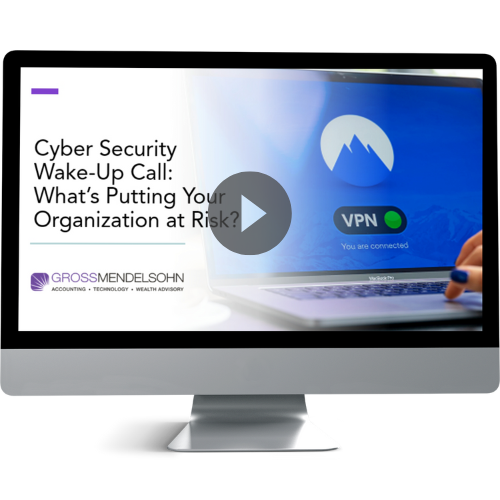You may picture the biggest threat to your network as an outside attacker — some bad actor, well-trained in hacking into systems and taking advantage of network vulnerabilities.
The reality is that the biggest threat to your system is the people that rely on it day in and day out. That’s right — you and your team.
That’s not to say you or your employees are intentionally threatening the security of your network, but given the complexity and rising number of attacks in today’s cyber landscape, keeping your network safe means much more than just enabling antivirus software.
To protect your network, you must be diligent and make cyber security an integral part of your organization’s culture. You and your team should be up-to-speed on the latest cyber security awareness training and best practices so you can recognize potential cyber threats.
Let’s explore how you and your team can be manipulated into putting your organization at risk and what you can do to minimize the threat.
Phishing and Social Engineering
Have you ever gotten an email from someone with a random offer or request for information? Phishing and other forms of social engineering are the primary means for bad actors to access a network and carry out an attack.
To draw in unsuspecting victims, phishers send spam emails impersonating legitimate senders or containing offers designed to lead you to do one thing: click. If you click a corrupted link, it can download malicious software to cripple your network or steal your information.
$4.35 million is the average cost of breaches worldwide across small and large businesses — which some businesses wouldn’t survive. Costs don’t just coincide with the breach. Performing forensics, hiring attorneys or employing an IT firm for remediation all factor into the financial hit that comes as a result.
It’s imperative that you and your employees are trained to identify phishing attempts and keep malicious attackers from accessing your network.
Spear Phishing
Spear phishing is a form of phishing that is personalized to target specific organizations or people, usually impersonating what would be a familiar figure or department at a company. The bad guys will do their research using LinkedIn, Facebook, your website and other public-facing information to tailor their spear phishing email specifically to you. That level of detail and craftiness is what makes this type of attack very successful.
Let’s say you receive an email from “HR” at your company requesting that you complete a linked form. You don’t recall getting emails from an HR alias in the past but assume something must have changed internally. You decide to click the link to fill out the form.
The browser window opens. Suddenly, you’re downloading malicious software onto your computer.
You might be thinking, “I wouldn’t click that link. I’d be able to notice if something was up and would verify whether it was legitimate.” Hopefully, you’re right—but it’s not that simple, particularly when attackers spoof email addresses to make it look like the email is from a department, client, vendor, boss or coworker.
You might not always thoroughly examine the “reply to” email address, especially when on your phone, meaning you could fall victim to spear phishing and need to make it a point to be vigilant.
How to Minimize the Threat
There are ways to minimize your organization’s risk of falling victim to phishing and other attacks. Training yourself and your users is priority number one. Remember that you hold the power to let outside attackers inside your network, meaning you and your users are the biggest threat to your network.
You want to make sure that everyone using your network has a healthy skepticism of emails with links, attachments or requests for information. Share this quick guide to cyber security with your team to keep them abreast of best practices for safeguarding against attacks.
To assist with this training, you can hire network specialists to create a campaign that will test how good your users are at detecting and avoiding phishing scams. This allows you to send your employees a safe and non-malicious, mock phishing email and collect information on which employees opened, deleted or even clicked the link. It’s like secret shopping. Afterward, you can work with your staff to train them in what to look for in the future.
Five Ways to Avoid a Phishing Attack
Should you receive an unexpected email, it could be a phishing attack. Follow these steps to determine if it’s legitimate:
- Identify the real sender
- Check the salutation
- Hover over links with your mouse (without clicking) to view the address and see if it looks suspicious
- Review the contents of the email footer
- When in doubt, delete the email
Taking these simple steps will keep you from letting in threats with devastating outcomes.
Unfortunately, in today’s cyber world, you’ll inevitably be the target of a phishing attack. That’s why you need to make sure your network users know how to spot a phishing attack and are trained to protect your business’s network and data.
Other Ways to Strengthen Your Security
- Test backups regularly for your organization’s devices so you know they work properly if/when needed.
- Separate your business and personal information where possible, and never use the same passwords for business and personal resources.
- Set up multi-factor authentication (MFA) for all applications, especially ones that house sensitive information.
- Use a secure password management software to store, share and protect your logins.
- Schedule a risk assessment to identify vulnerabilities hidden in your network and what’s holding you back from meeting compliance requirements.
Should Your Security Become Compromised
Even with a fully trained staff, it’s important you have policies and procedures established in case a breach occurs and your network security is at risk.
If your organization is at risk, ensure your team knows exactly what to do. Lay out security procedures upfront and, with properly trained employees, you can intercept an incident before it gets worse. Bad things happen, but you and your team can control how devastating a threat becomes.
Need Help?
Our Technology Solutions Group includes a team of cyber security experts. We’re happy to meet with you for a cyber security risk assessment of your organization’s IT infrastructure. Or, you can contact us online or call 410.685.5512 with any questions.


